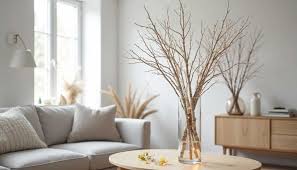In the world of Nordic-inspired living and décor, the term pyntekvister has emerged as a charming concept tied to simplicity, elegance, and nature. While it might sound unfamiliar to those outside Scandinavian culture, pyntekvister plays a small yet meaningful role in how people beautify their homes, celebrate seasons, or create a calming space. This article explores what pyntekvister means, how it’s used today, and why it matters in design and lifestyle conversations.
What Does Pyntekvister Mean?
The word “pyntekvister” originates from Norwegian and Danish roots, where “pynt” means decoration or adornment, and “kvister” translates to twigs or small branches. Together, pyntekvister literally means decorative twigs. These are typically branches collected from nature and used in minimalistic arrangements for visual beauty and symbolic value.
They are often placed in vases, wrapped with string lights, decorated with seasonal ornaments, or used as centerpieces in both modern and rustic interiors.
How Pyntekvister Fits in Scandinavian Design
Scandinavian design emphasizes natural materials, functionality, and clean aesthetics. Pyntekvister align perfectly with these values because they:
- Come directly from nature
- Require no artificial processing
- Provide elegance with simplicity
- Are often free and sustainable
Designers and homemakers use pyntekvister to express harmony with nature while adding texture and life to otherwise minimal spaces.
Cultural and Seasonal Significance
In Scandinavian homes, pyntekvister are especially popular during seasonal transitions:
- Spring: Birch and willow twigs with budding leaves are displayed to welcome growth.
- Easter (Påske): Twigs are decorated with painted eggs, ribbons, and feathers.
- Autumn: Twigs with colorful leaves or berries add warmth to the home.
- Christmas: Pine or spruce branches with ornaments are classic pyntekvister arrangements.
Pyntekvister also support the Scandinavian concept of “hygge” (cosiness and contentment), by bringing the outdoors inside and connecting people to their environment in a peaceful, tactile way.
Modern Uses of Pyntekvister
1. Home Decor
In urban settings, pyntekvister are used as natural decorative accents. Placing a bundle of birch twigs in a tall vase, either bare or wrapped in fairy lights, creates a rustic-modern fusion in living rooms, cafes, and office spaces.
2. Event Styling
Weddings, seasonal events, and boutique hotels often use pyntekvister for:
- Table centerpieces
- Aisle decorations
- Window displays
They serve as eco-friendly and affordable alternatives to artificial decor.
3. DIY Crafting
Creative individuals and craft lovers embrace pyntekvister in DIY projects:
- Painted twigs for wall hangings
- Holiday-themed twig trees
- Framed twig patterns for minimalist art
These projects foster sustainability and creative expression without a big budget.
4. Therapeutic Use in Wellness Spaces
Because pyntekvister create a sense of calm and connect people with nature, they’re used in spas, yoga studios, and wellness retreats as natural mood enhancers. The sight of simple twigs arranged aesthetically can offer mental grounding in an overstimulated world.
Why Are Pyntekvister Becoming Popular Globally?
Beyond Scandinavia, pyntekvister are gaining attention in interior design blogs, eco-conscious communities, and minimalist movements worldwide. Their growing appeal can be attributed to:
- A shift toward natural and sustainable living
- The rise of minimalist aesthetics
- A desire for low-cost, low-impact decor
- The spread of Nordic lifestyle concepts like hygge and lagom
People want to feel closer to nature—even indoors—and pyntekvister offer a tactile, beautiful way to do that.
Real-World Examples
In Sweden, a family might display pyntekvister adorned with hand-painted Easter eggs on their dining table. In a New York yoga studio, dry willow twigs might be arranged in corner pots to evoke grounding and flow. In a Berlin apartment, a minimalist designer may feature a single pine twig in a ceramic vase beside white curtains and linen couches.
These examples show how versatile pyntekvister can be, transcending geography while staying true to their natural origin.
Tips for Using Pyntekvister at Home
- Choose the right twigs: Look for symmetry, texture, or budding tips depending on the season.
- Pair with natural containers: Use glass, ceramic, or terracotta vases to highlight the organic look.
- Keep arrangements simple: Don’t overcrowd. Negative space is part of the aesthetic.
- Refresh as needed: Replace dried twigs every few weeks or decorate seasonally.
- Add subtle elements: Fairy lights, tiny ornaments, or dried flowers can elevate the look without overpowering it.
Sustainability and Ethical Collection
It’s important to collect twigs ethically. Avoid breaking branches from live trees. Instead, gather fallen branches or use pruned materials from gardens. This maintains respect for nature while minimizing environmental impact.
You can also purchase pyntekvister from ethical flower markets, eco-friendly decor stores, or Scandinavian design retailers.
The Emotional Power of Natural Decor
Studies show that natural materials in interior spaces—wood, plants, and organic textures—can reduce stress, improve focus, and enhance mood. Pyntekvister, with their humble yet elegant form, are part of this wellness trend. They remind us to slow down, breathe, and stay connected to the earth.
Conclusion
Pyntekvister are more than decorative twigs—they are a symbol of natural beauty, Nordic sensibility, and thoughtful living. Whether you live in Oslo, Mumbai, or London, adding a few well-chosen branches to your home can create a soothing, stylish, and sustainable environment.
If you’re drawn to minimalist design, seasonal decor, or DIY nature crafts, pyntekvister might just become your new favourite element of home living.
FAQs
What exactly are pyntekvister?
Pyntekvister are decorative twigs or branches used in Scandinavian-style home décor. They’re often arranged in vases and used in seasonal displays.
Are pyntekvister only popular in Scandinavia?
While they originated in Nordic culture, pyntekvister are gaining popularity worldwide due to their simplicity and eco-friendly nature.
Can I collect pyntekvister myself?
Yes, but always gather fallen twigs and avoid harming trees. You can also purchase them from craft or design stores.
How long do pyntekvister last?
They can last several weeks or months, depending on the type of twig and indoor conditions. Dry branches are particularly durable.
Do pyntekvister need maintenance?
Not much. Occasionally dust them and replace if they fade or break. You can also decorate them seasonally.

